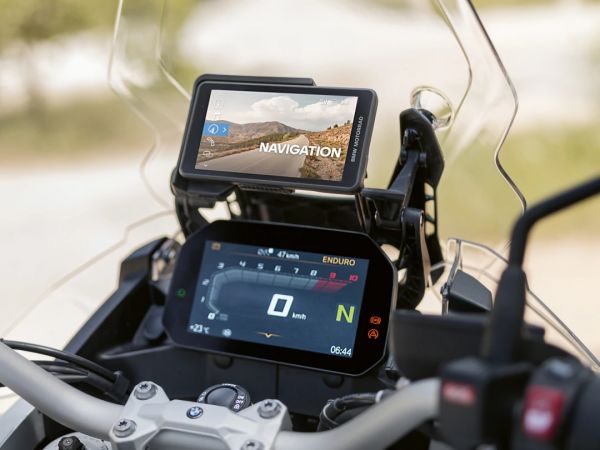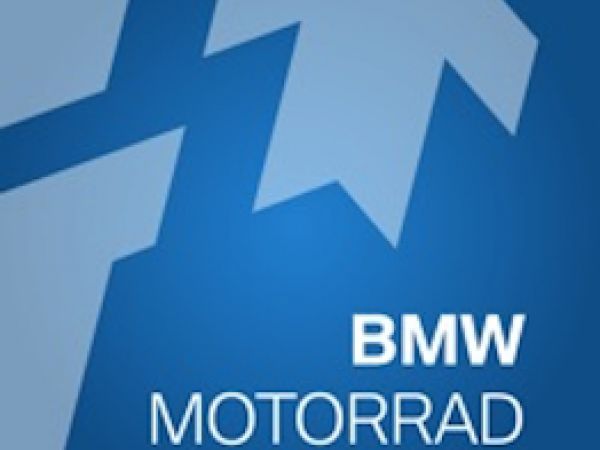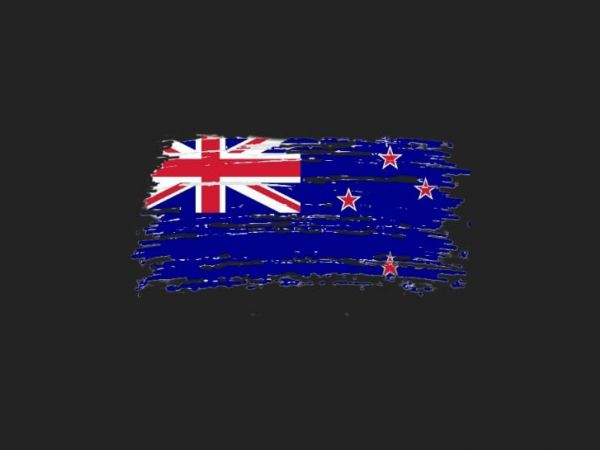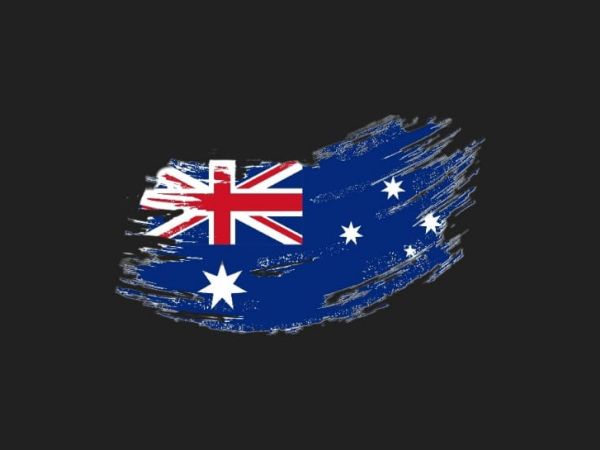Traffic regulations in Oceania - Australia
Traffic regulations in Oceania - Australia
Category: Traffic regulations Oceania
What should be considered on a motorcycle tour through Australia? What documents do you need to bring with you? Which special features in road traffic have to be observed. MotoGS WorldTours provides you with answers to your most important questions.
Errors and omissions excepted - all information without guarantee.
Basics:
Of course, Australia is NOT a member of the European Union, but is a member of the British Commonwealth. Australia also follows British rules and of course worships the English royal family.
It is therefore obvious that left-hand traffic prevails in Australia, as is the case with British rules.
So it is no wonder that Australia is becoming more and more popular as a destination for motorcycle enthusiasts and that more and more bikers want to experience "Down Under" up close! Here is a brief summary of why Australians are so proud of each of their states (Western Australia, Northern Territory, Queensland, South Australia, New South Wales, Victoria & Tasmania).
From bustling metropolises to stunning landscapes, Australia has everything you could imagine for an unforgettable motorcycle tour. Discover the spectacular underwater world of the Great Barrier Reef, discover the tracks through the rainforests - the most biodiverse natural areas on earth - and experience the endless plains of the Red Centre. Immerse yourself in the millennia-old history of the Aborigines and experience the indigenous people up close. In this land of contrasts, everyone gets their money's worth.
Currency:
The currency of Australia is the Australian Dollar (AUD). If you are changing from, for example, the Euro or US Dollar to the Australian Dollar, the Oanda website is a very good source of information.
Entry requirements for Australia, vehicle papers and other necessary documents:
You need a valid passport to travel to Australia. Make sure that your passport is still valid for at least 3 months on the day of your entry.
Visa:
You have to apply for a tourist visa for your entry, which you can apply for free online under Visa eVisitor 651. The visa will be linked to your passport. To do this, you must first create an ImmiAccount. After the visa has been issued, you are entitled to enter Australia for a period of 3 months.
Applications are usually approved within four days and the visa is valid from the day it is issued. It is recommended that you print out all emails between you and immigration and take them with you during your trip. Since the visa is linked to the passport number, a separate visa must be applied for for each person.
You can find further useful information about a necessary visa, depending on your country of origin, on the following website VisaHQ. This website is a very good indicator in questions related to visa matters according to your country of origin.
Your Vehicle documents:
You do not really need to think about vehicle documents, unless you want to have your own motorcycle brought to Australia by plane or shipping container. In principle, this is of course possible, but it bears no financial relation to the costs if you rent a motorcycle easily and uncomplicatedly on site.
If you still wish to have your own motorcycle brought to Australia, then you must ensure that the motorcycle leaves the country after 365 days at the latest, otherwise it will be considered an import, and that can or will be expensive.
The international driver's license is also required for your national driver's license. Renting a motorcycle or car is almost impossible without an international driver's license. It is very unlikely that you will also need an IDP (International Drivers Permit) issued in several languages. However, this also depends on your country of origin. For more information, please visit the International Drivers Association website.
With a rented motorbike through Australia:
Basically no problem. Requirements to be able to rent a motorcycle in Australia, you have to be at least 25 years old. However, some motorcycle rental stations also let younger riders, such as 23 years old, use the motorcycle.
For riders under the age of 25, however, you often have to reckon with a young rider surcharge.
Health insurance:
In principle and almost mandatory, all travelers to Australia, regardless of their country of origin, should take out international health insurance. This can also be done easily here via Global Rescue. Surely this type of insurance protection is a bit more expensive than other providers. However, as the name suggests, this type of coverage is built on Rescue. Therefore not comparable. However, this should not be understood as advertising, it is a simple recommendation.
Pay Attention: Whether there is a state accident insurance in Australia, similar to the state accident insurance for example in New Zealand, is unfortunately not known and there is no information available.
As a note, in New Zealand all locals as well as all tourists are automatically insured through ACC in the event of an accident. The ACC is a form of mandatory insurance that the government provides for free for Kiwis AND tourists. However, this alone does not release you from the personal responsibility to take out your own private insurance cover, for example to take care of the home transport.
Helmet obligation
Helmets are compulsory! A special certification of a motorcycle helmet is not known.
Riding without a motorcycle helmet is very expensive and will quickly amount to around AUD 1,000 depending on the state.
First aid kit / warning vests:
It is not absolutely necessary to carry a high-visibility vest and a first-aid kit. However, it is always advisable to have safety vests, first aid kit, a motorcycle warning triangle and a small warning light with you, just in case.
Lighting:
It is not compulsory to turn on the lights during the day. However, it is highly recommended to switch on the light, no matter what time of day and no matter whether outside of town or in town.
Speed limits in Australia:
In built-up areas: depending on the route 50 km/h or 60 km/h,
Outside built-up areas: depending on the route 100 km/h or 110 km/h,
Autobahn Motorway: depending on the route, 100 km/h or 110 km/h.
Exceptions: Speed limits may vary from state to state. In the Northern Territory, for example, 130 km/h is allowed on the motorway.
Pay attention: Speed cameras are very common in Australia and the fine is very high, probably far higher than you are used to at home!
Alcohol limit:
The general traffic rules of Australia also determine how much alcohol in the blood a driver is still allowed to drive on the road. The blood alcohol limit is 0.5‰ and 0.0‰ for novice drivers during the probationary period.
Interesting note: If this is exceeded, very high penalties and a riding ban can be expected. If a law regarding alcohol riding is broken again, the so-called 'breathalyzer' is installed on the vehicle. Before starting the journey, the rider must blow into it and the vehicle will only start if the blood alcohol content is 0.0‰.
Tiresome topic of tolls on motorways, tunnels and bridges, also in Australia:
Australia also levies a toll on certain road sections and bridges. However, the system is not transparent for tourists. It can also be called an unfair system for travelers. Many rental stations have been trying to achieve better regulation for tourists for a long time.
At the moment, however, it looks as if the various toll companies are using the toll system as a money printing machine.
Because the current system of toll roads in Australia is opaque and confusing for many and results in hefty fines for travelers! If your native language is not English, this does not get any easier either.
Toll roads in Australia - NO cash payment possible:
Since it is no longer possible to pay with cash when using a toll road, many tourists are now caught not paying their tolls. Today, tolls can only be paid electronically using an “electronic tag” or “e-tag”. Alternatively, you can pay by phone or have a visitor pass issued online for a certain period of time, from which the toll fees are automatically deducted from the credit card provided. This is certainly the easiest way and is therefore recommended.
If you are crossing a toll road in Australia, you generally have 48 - 72 hours to contact the relevant toll company and settle your toll charges. As mentioned earlier, since the toll companies no longer accept cash, many tourists fall into the trap set by the toll companies.
How to avoid being fined by toll roads in Australia while riding Australia?
Here is an overview of the different toll companies in Australia. Please note that things are subject to change. Prices rise and regulations change. This small toll road guide is only intended as a general guide and no liability can be accepted for deviations.
Toll Roads in Australia - Sydney:
Sydney is the toll road capital of Australia! Here you will find many toll roads and bridges that cannot be paid for with cash. Here you can only use an e-tag or you have to be registered with a visitor pass.
Remember, paying the Australian tolls is your responsibility and not your motorcycle rental station's job. Below is a list of ROAM toll road toll roads in Sydney.
How do you use toll roads in Australia - Sydney
First of all, if you already have an “e-tag”, you must always use advertised “E” lanes. Your e-tag will then be automatically read when crossing a toll road and the correct amount will be deducted from your credit card. These tags can be purchased from Linkt for all of Australia via the following website.
Toll roads in Melbourne:
Toll roads in the Melbourne area are monitored by CityLink. This includes Tullamarine Freeway, Bolte Bridge, Burnley and all of the tunnels connecting the South-Eastern suburbs to the West Gate Bridge and Tullamarine Freeway. Also, the roads towards Exhibition Street from the south side of downtown fall under the toll roads.
There are various payment methods for occasional use of the toll roads. A use that can be requested in advance by phone (13 26 29) or website. This includes the 24 hour pass, the weekend pass and the Tulla pass:
The 24 Hour Pass begins with the first use of a toll road on a pre-determined day.
The Weekend Pass covers all journeys from Friday midnight to Sunday midnight.
The Tulla Pass covers travel between Flemington and Bulla Street in both directions.
You can also apply for these passes through the CityLink website.
Late payment of the toll charges will incur additional costs for the owner of the vehicle, in this case your motorcycle rental company. So if you rented a vehicle, the rental company will charge you an additional fee to have the rental company write out the fine in your name.
Toll roads in Brisbane:
Toll roads in the Brisbane area are mainly to the south of the city and run north to the airport, among others
For the Gateway Motorways, tolls can be paid using the "viavideo pass system" at Linkt. The passes can be paid for by credit card or cash.
As soon as you have registered your credit card, the tolls incurred for the specified travel time will be automatically debited. Alternatively, you can pay up to 3 days after using the toll road.
Special traffic rules:
Traffic drives on the left in Australia, including at roundabouts. You should first get used to this, especially if you have never had the opportunity to learn and experience this before. It is a big change, especially at intersections without traffic lights in flowing traffic. But after a few hours you will get the hang of it. It is always best to try to follow behind a car or another motorcycle because they know what to do. At least that is how it should be.
Much more dangerous, and experience speaks for itself, is to cross the street on foot. That is no joke. Countless times I would have walked into a car or a big truck, almost blind. Once a bus that was just about to stop for passers-by almost broke my nose with the rear-view mirror. It was not the bus driver's fault. It was all my fault. And how could that happen. I stood on the side of the road and wanted to cross the street. Out of habit, I looked LEFT. And that is the problem, because no car or other vehicle is coming from the left, because they are all coming from the right. So I looked to the left, no car in sight, so just start walking. And right at that moment, the bus pulls up in front of me and I literally walk into the bus. Getting used to something like that is more difficult than riding a motorcycle on the left. It is easy to explain why this is so. When you ride a motorcycle you are alert and focused, and that is exactly what you usually are not when crossing roads, because it is habit.
Fines:
The fines for speeding are significantly higher compared to many other countries - especially in the state of Queensland. Here, exceeding less than 11 km/h can cost around AUD 300 and exceeding 11 km/h even more than AUD 400. Speeders, on the other hand, are really at a loss for money, since, for example, a speed violation of more than 20 km/h is punishable by around AUD 650, while exceeding the speed of more than 30 km/h will cost around AUD 1,000. Anyone speeding over 40 km/h faces a fine of at least AUD 1,600 and a six-month driver's license suspension. But especially in traffic-calmed zones, such as near schools, you should ride very carefully, since the penalties here are very high even if you exceed the permitted speed very slightly (5-10 km/h).
By the way - on the official Australian holidays, the penalty for traffic offenders is twice as high as usual!
School buses with their hazard lights on shall not be passed.
Because of the large number of nocturnal animals, riding at night and at dusk should be avoided.
Be careful when overtaking the road trains, because the truck trailers often reach a length of up to 50 m.
For long distances, especially in the outback, always carry enough water with you
Conclusion:
Incidentally, the safety standard for vehicles is laid down in the 'Australian Design Rules'. Anyone who follows these rules and does not ride through the country like a rowdy will have a lot of fun motorcycling on the 5th continent, as traffic in Australia is much more relaxed than in Europe, for example.
Correct behavior in the event of an accident or breakdown:
In some countries, including Australia, it is important to call the police even in the case of "minor damage", because the police protocol is the basis for the settlement of the damage.
Emergency numbers in Australia:
The general emergency number is: 000
The international emergency number 112 is also valid.
As of 07/13/2023

TAGS
western australia west gate bridge visa evisitor 651 victoria and tasmania tullamarine freeway. tullamarine freeway sydney south australia queensland northern territory new south wales melbourne left-hand traffic exhibition street down under burnley british commonwealth brisbane bolte bridge australian dollar aboriginesShare Your Thoughts
Share your experiences, questions, or suggestions!
Comments from Fellow Riders
Nobody has commented yet – your thoughts?
Blog categories
Moto Tours

* Balkan-Italy Adventure Tour
Approx. 2340 miles!
14 riding days through 5 countries!
15 overnight stays + 2 overnight stays on a ferry!

* Balkan-Carpathians-Albanian Alps Tour 2
Approx. 3138 miles!
21 riding days through 7 countries!
27 overnight stays!

* Balkan-Romania Adventure Tour
Approx. 2220 miles!
11 riding days through 5 countries!
12 overnight stays!

* Balkan-Carpathians-Albanian Alps Tour 1
Approx. 2520 miles!
15 riding days through 7 countries!
18 overnight stays!

* Croatia-Italy-France Adventure Tour
Approx. 1990 miles!
15 riding days through 4 countries!
17 overnight stays + 1 overnight stay on a ferry!

* Croatia-Sicily-Amalfi Coast Tour
Approx. 2730 miles!
18 riding days through 3 countries + Sicily!
21 overnight stays + 1 overnight stay on a ferry!

* New Zealand Adventure Tour
Approx. 4133 miles!
20 riding days through the South and North Island!
24 overnight stays + 1 overnight stay on a cruise!

Croatia - Route des Grandes Alpes, July 2025
2 Americans - 1 boy and 1 girl, 1 motorcycle - a BMW R1250GS, one motorcycle tour and one goal ...

Balkans - Romania Tour, June 2025
At the end of June 2025, the time had finally come. Between June 23 and June 25, all participants in this tour gradually arrived in Trogir.

Balkans - Italy Tour, May 2025
Together we covered about 3700 km, crossing the Adriatic twice, from Durrës to Bari and from Ancona to Split.

Money protection in the event of insolvency
Money Protection Certificate according to § 651r and § 651w of the Civil Code of the Federal Republic of Germany ...

Packing list for a motorcycle tour
Pack your things and get going...

Travel planning and navigation
The next vacation is just around the corner, hopefully, and you've decided to finally ...

Riding a motorcycle in a group or alone?
Riding a motorcycle in a group or riding alone? Are you worried about safety, contact with other people ...

The International Driving Permit
Understanding the International Driving Permit (IDP). A Key to Smooth Overseas Riding for ...

BMW Motorcycle ConnectedRide Navigator
The new BMW Motorcycle ConnectedRide Navigator ...

BMW-ConnectedRide Cradle and Connected App
Riders of new BMW models have several options for using information and entertainment ...

Traffic regulations in Oceania - New Zealand
What should be considered on a motorcycle tour through New Zealand?

Traffic regulations in Oceania - Australia
What should be considered on a motorcycle tour through Australia?

